NCERT Solutions for Class 7 Science Chapter 9 Life Processes in Animals
Let Us Enhance Our Learning
Q1: Complete the journey of food through the alimentary canal by filling up the boxes with appropriate parts.
 Ans:
Ans:
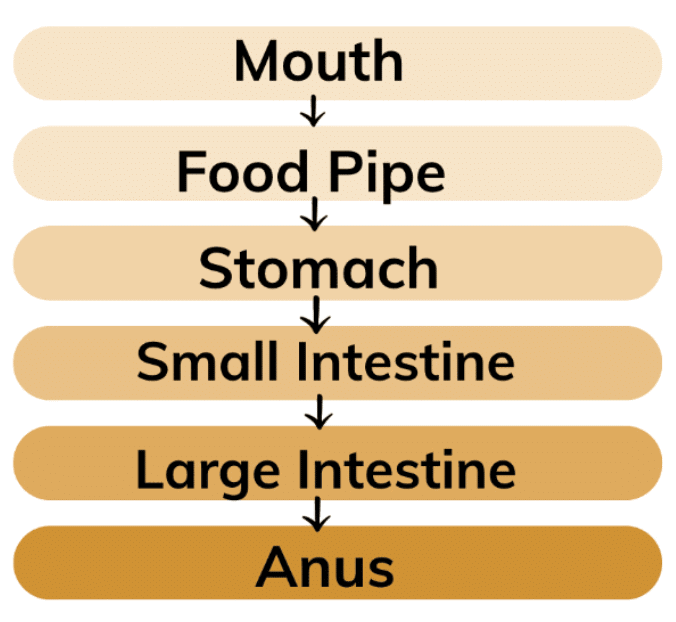
Q2: Sahil placed some pieces of chapati in test tube A. Neha placed chewed chapati in test tube B, and Santushti took boiled and mashed potato in test tube C. All of them added a few drops of iodine solution to their test tubes—A, B, and C, respectively. What would be their observations? Give reasons.
Ans:
Test tube A (Pieces of chapati): After adding iodine solution, the color of the mixture will turn blue-black. This is because iodine reacts with starch and turns blue-black. The chapati contains starch, so iodine will show this color change in test tube A.
Test tube B (Chewed chapati): The color of the mixture will either show no change or a very faint blue-black color. This is because the chewing process, aided by the saliva, starts breaking down the starch into simpler sugars (like maltose), which do not react with iodine. So, there will either be no starch left or only a small amount in test tube B.
Test tube C (Boiled and mashed potato): The color of the mixture will turn blue-black. Potatoes contain starch, and when iodine is added, it will react with the starch and turn blue-black, just like in test tube A.
Reasoning: Iodine solution reacts with starch and turns blue-black. In test tubes A and C, starch is present, which causes the color change. However, in test tube B, due to the breakdown of starch into simpler sugars by chewing, there is less starch left to react with the iodine, resulting in a weaker or no color change.
Q3: What is the role of the diaphragm in breathing?
(i) To filter the air
(ii) To produce sound
(iii) To help in inhalation and exhalation
(iv) To absorb oxygen
Ans:
(iii) To help in inhalation and exhalation.
The diaphragm moves downward during inhalation, expanding the chest cavity, and moves upward during exhalation, pushing air out of the lungs.
Q4: Match the following.
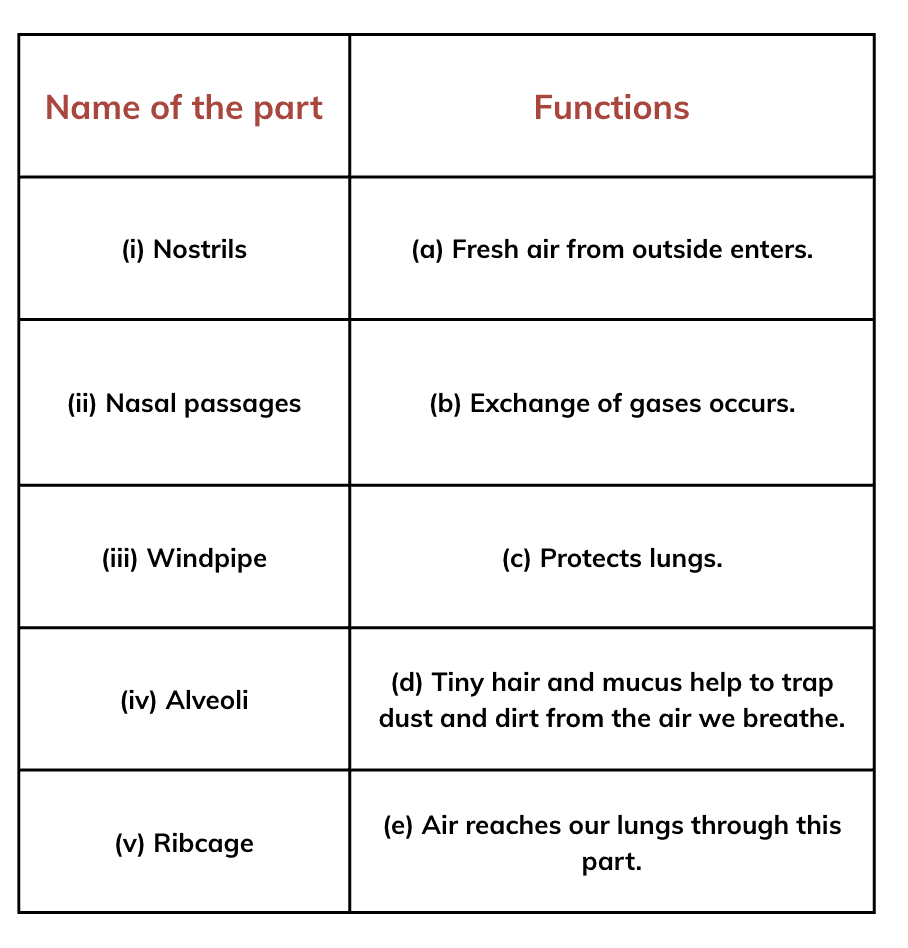
Ans: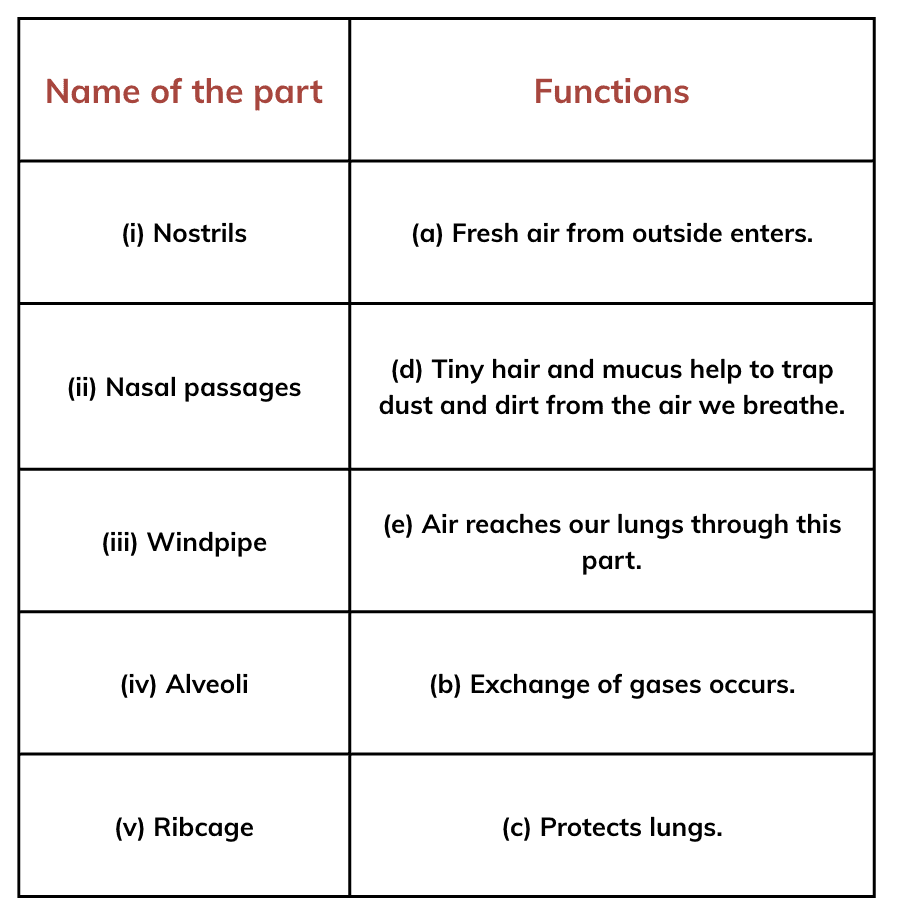 Q5: Anil claims to his friend Sanvi that respiration and breathing are the same process. What question(s) can Sanvi ask him to make him understand that he is not correct?
Q5: Anil claims to his friend Sanvi that respiration and breathing are the same process. What question(s) can Sanvi ask him to make him understand that he is not correct?
"What is the difference between breathing and respiration?"
"Does respiration happen even when we are not breathing?"
"Can you explain what happens to the food we eat during respiration?"
These questions will help Anil understand that breathing is the physical process of inhaling and exhaling, while respiration is the chemical process where oxygen is used to break down glucose to release energy.
Q6: Which of the following statements is correct and why?
Anu: We inhale air.
Shanu: We inhale oxygen.
Tanu: We inhale air rich in oxygen.
Ans: (iii) Tanu: We inhale air rich in oxygen.
This is the most accurate because the air we breathe contains 21% oxygen, making it "rich in oxygen" for our needs.
Q7: We often sneeze when we inhale a lot of dust-laden air. What can be possible explanations for this?
Ans: When we inhale a lot of dust-laden air, we often sneeze for the following reasons:
1. Nose irritation: Dust can irritate the inside of our nose, causing the body to react by sneezing.
2. Body's defense: Sneezing helps the body get rid of the dust, protecting the lungs from harmful particles.
3. Cleaning airways: Sneezing clears the dust from our nose and throat, making it easier to breathe.
Q8: Paridhi and Anusha of Grade 7 started running for their morning workout. After they completed their running, they counted their breaths per minute. Anusha was breathing faster than Paridhi. Provide at least two possible explanations for why Anusha was breathing faster than Paridhi.
Ans: Here are two simple reasons why Anusha was breathing faster than Paridhi after their run:
Running faster: Anusha may have been running faster or working harder, which makes her body need more oxygen, causing her to breathe faster.
Fitness levels: Anusha might not be as fit as Paridhi, so her body has to work harder, making her breathe faster.
In short, Anusha might have run faster or her body needed more oxygen, which made her breathe faster than Paridhi.
Q9: Yadu conducted an experiment to test his idea. He took two test tubes, A and B, and added a pinch of rice flour to the test tubes, half-filled with water, and stirred them properly. To test tube B, he added a few drops of saliva. He left the two test tubes for 35–45 minutes. After that, he added iodine solution into both the test tubes. What do you think he wants to test?
Ans: Observation:
Test Tube A (without saliva): After adding iodine, the water in test tube A will turn blue-black, indicating that starch is present in the rice flour.
Test Tube B (with saliva): After adding iodine, the water in test tube B will show little to no color change (or a lighter blue-black color), suggesting that the starch has been broken down by the enzyme amylase in the saliva.
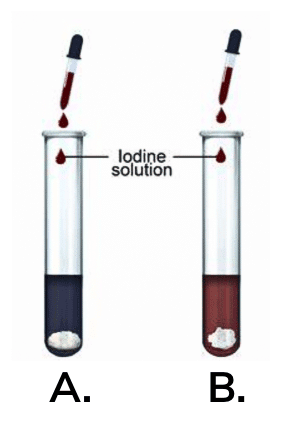 By performing this experiment, Yadu tested the effect of saliva on the breakdown of starch in rice flour. The iodine test will show whether starch is present in the rice flour, indicating whether it was broken down by the enzymes in the saliva.
By performing this experiment, Yadu tested the effect of saliva on the breakdown of starch in rice flour. The iodine test will show whether starch is present in the rice flour, indicating whether it was broken down by the enzymes in the saliva.
Q10: Rakshita designed an experiment taking two clean test tubes, A and B, and filled them with lime water as shown in the figure. In test tube A, the surrounding air that we inhale was passed on by sucking air from the pipe, and in test tube B, the exhaled air was blown through the pipe. What do you think she is trying to investigate? How can she confirm her findings?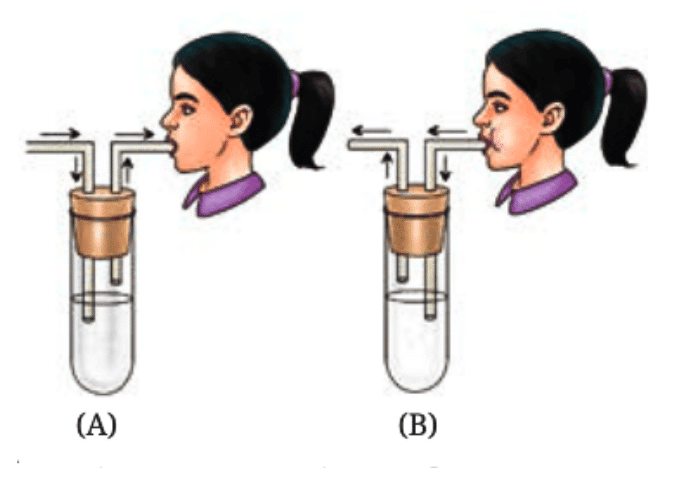
Ans: Rakshita is investigating the difference in the amount of carbon dioxide between inhaled and exhaled air.
She can confirm her findings by inhaling and exhaling from tubes:
Test Tube A (Inhaled air): When the air we breathe in passes through lime water, there will likely be no color change because the air we inhale has very little carbon dioxide.
Test Tube B (Exhaled air): When exhaled air passes through lime water, the lime water will turn milky due to the presence of higher carbon dioxide in the exhaled air. Carbon dioxide reacts with lime water to form calcium carbonate, which causes the milkiness.
Conclusion:
By observing whether the lime water in test tube B turns milky, Rakshita can confirm that exhaled air contains more carbon dioxide than inhaled air.
|
85 videos|322 docs|12 tests
|
FAQs on NCERT Solutions for Class 7 Science Chapter 9 Life Processes in Animals
| 1. What are the main life processes in animals as described in the NCERT Class 7 syllabus? |  |
| 2. How do animals obtain their food according to the NCERT Class 7 materials? |  |
| 3. What is the role of respiration in animals? |  |
| 4. How is transportation of nutrients and gases carried out in animals? |  |
| 5. What are the different methods of excretion in animals? |  |

















